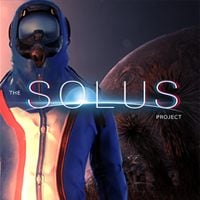The Solus Project Review – a flawed space odyssey
We review The Solus Project, an independent space adventure game aspiring to be a survival sandbox. Does the story taking place on planet Gliese-6143-C have a chance to conquer the universe?
The review is based on the PC version.
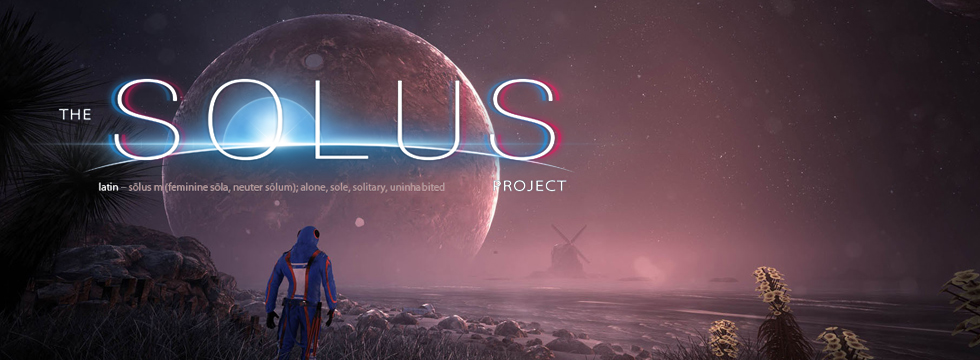
- Superbly-designed, beautifully-furnished semi-open world;
- Visual and technical diversity among levels;
- Dense aura of isolation;
- Well-balanced survival elements;
- Abundance and diversity of collectibles.
- Predictable, cookie-cutter plot and bland main character;
- Backtracking;
- The visuals could have been better.
Until recently I was convinced that the subject of space exploration had been completely exhausted by hits the likes of Elite: Dangerous or the upcoming No Man's Sky. I mean, what can engage a homegrown astronaut more than a sandbox set in a universe with nigh infinite number of stars or a well-designed RPG experience? And then, suddenly The Solus Project appeared on the horizon – seemingly a small, independent production, but with an enormous (to my utmost surprise), and reasonably well-exploited potential – delivering a successful attempt to implement a space odyssey as a very climatic, semi-open, and well-thought-out adventure game. The lonesome trek on Gliese-6143-C, although very simple in some aspects, should satisfy most fans of interstellar themes, and the reasons for that are several...
A planet of stellar beauty
If you're a fan of Nolan's Interstellar, The Solus Project will make you feel at home. The game greets us with a barren overlook of a rocky landscape and the grey expanse of the ocean. We see other planets (moons?) slowly wandering above the waterline, and in the heart of this quiet turmoil we stand – cosmic survivors with only ourselves to rely on. Overwhelmed by the vastness of the desolate planet, we know that we will have to discover its secrets alone, because the fate of all mankind depends on it. The initial impression doesn't abate with the following minutes and hours, quite the contrary actually – The Solus Project has an impressive world area at its disposal, including not only sections of fully open, explorable land mass, but also dozens of caves and underground temples occupied by ancient structures. Those architectonic giants erected by an old civilization are a perfect complementation to the otherwise barren nature of the planet, giving it a truly alien character.
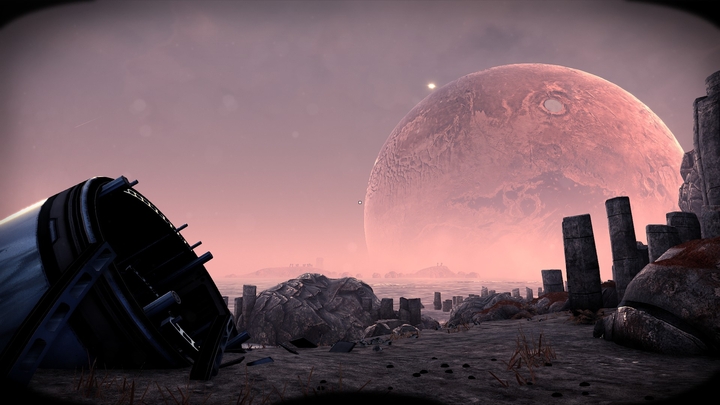
Location design deserves a separate section in this text – throughout the game I was under the constant impression that the great potential looming in a mysterious, extraterrestrial environment unknown to man could hardly be utilized better that here. Open sections are filled with monumental, extremely complex structures, their use of vertical level structure forces the players to engage in platformer-like travels between the landmarks, and they never skimp on hidden corners that lead to other locations. The closed underground stages, however, are disturbing mazes, oozing with thick atmosphere, requiring significant navigational abilities for the player to be able to thoroughly explore them.
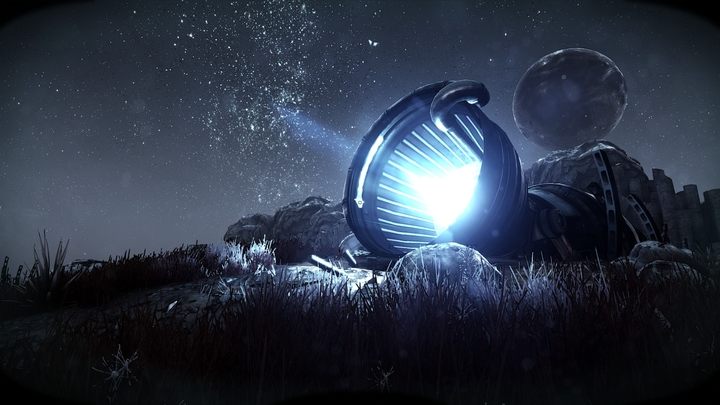
What constitutes a significant part to the charm of this unique place is the austere but magical atmosphere. By day, this piece of ocean-enveloped land attracts with a consistent, subdued palette of colors, and by night it shines with the glow of the aurora. Our journey is frequently accompanied by randomly generated downpours, and tide intensity varies depending on how big is the distance between Gliese-6143-C – where the action takes place – and other celestial bodies. Teotl Studios, currently employing less than ten people, sure did set the bar high for themselves, because their ambition was to create an impressive and memorable setting on a grand scale. And Gliese-6143-C clearly hits the mark.
The one thing this planet lacks is a little "natural" beauty. The Solus Project, though not the ugliest game this year, certainly isn't the most beautiful one either. Its most striking shortcomings are repeating textures and rather limited distribution of visual ornaments in smaller locations. The fact that most objects share the same 3D models becomes painfully obvious especially when venturing under ground, where it is easy to forget of the vastness which characterizes the open segments on the surface (and which helps the repetitiveness go unnoticed). Despite the lack of visual fireworks I would never describe Solus as deterringly ugly – it's just that the capabilities of Unreal Engine 4 could have been put to a slightly better use.

Journey through the known
The adventure itself may be a linear experience, but this doesn't rule out the world's semi-openness. The linearity simply means that there is a main goal towards which we are "pushed" by all the circumstances taking place on the surface of Gliese. In this case, the objective is the construction of a transmission tower, enabling us to contact the other members of the Solus project. And yes – everything we do, we do to complete this single task. Objectives that at first seem like nothing more than mini side quests turn out to be closely associated with the main storyline, which also emphasizes the brevity of the plot. Hundreds of records left by survivors and aliens alike narrate the course of two parallel storylines, the common point of which is the problem of humanity's survival.
Unfortunately, the story itself is cliche and lacking substance, and its conclusion – highly disappointing. Teotl focused their full attention to the handcrafting of the setting, only to realize half-way through that, 'hey, this thing has a protagonist' (and he could use some kind personality to display), and that setting the action in space should be the result of a logical chain of events that somehow led one to another. The outcome: a plot that is weak, painfully repetitive, featuring a one-dimensional, incredibly dumb protagonist and a cheap climax, The amount of potential wasted this way is something that cries out for vengeance. Especially when you take into account the fact that the small universe of Solus would be an excellent material to present an interesting, mind-twisting vision of an alien civilization and the consequences to its existence. It's a mighty shame, but even this slip can be understood, though not forgiven. The plot's first and foremost role is to be a convenient excuse for chasing the players around different locations and throwing various grand attractions at them. The latter include: escape from a cloud of deadly smoke (think of the anomaly from Lost), chase after levitating spheres, or even an encounter with... a flying saucer.
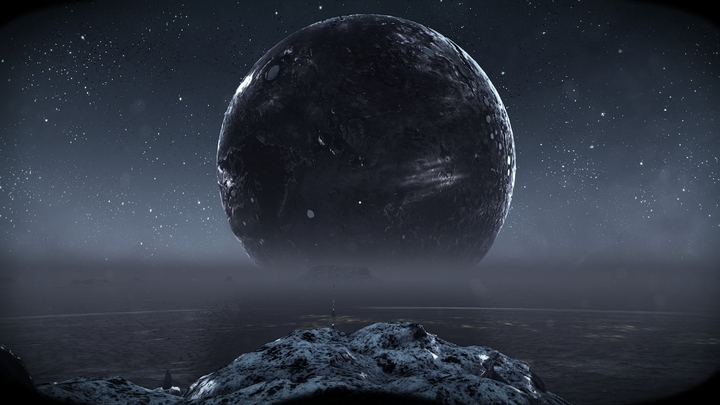
Sadly, after some time, and despite all the diversions, the backtracking syndrome sets in mercilessly. And although it needs to be admitted that the developers are doing whatever they can to neatly camouflage it, its arrival is inevitable – after all, it is difficult to cover up the need to run back and forth between sites that you already know. Approaching the end of the adventure, I even started to get the impression that the people at Teotl Studios – having done a great job on the construction and furnishing of the game world – had no idea how to hook up the progress of the plot to the game mechanics. What they did was scatter the items required to progress the game across the whole stage. You need a key to the door? You'll find it on the other end of the map. A doll to open an underground passage? Right by the probe, half a kilometer away. While it nicely coincides with the exploratory spirit of the production, in the long run it would be difficult not to call it designer's laziness. That's why the game introduced the puzzles – simple, intuitive, sometimes outright dumb, and providing little to no satisfaction to the person solving them, in fact, the only good thing about them is the fact that they were included at all. Their presence reminds one of the first installments of Tomb Raider, except they are a far cry from the complexity of their predecessors. And although it would appear that their intended role was only to inject Solus with a slight dose of variety, their wasted potential is (once again) something that's hard for me to forgive.
Survival – that's the easy part
The protagonist's PDA regularly reminds him that the ultimate goal of his "visit" to this hostile wilderness is to keep himself alive and ready the planet for human colonization. To keep himself alive, he needs to survive, and for him to survive – we need to take care of him. Survival mechanics in Solus are a well-crafted element that balances the gameplay and makes it neither too difficult nor too easy. The character's survival bars decrease faster or slower depending on the difficulty level (one of three available), and the more time we spend on Gliese, the more resistant to some of its “attractions” we become. On normal difficulty the balance is almost palpable – during most of the time I spent with this production I encountered essential resources more or less exactly when I needed them, which reasonably motivated me to continue caring for my body condition. The absence of a “stayin'-alive whip” eliminated the impression of Solus being a hardcore survival game wannabe, making this title exactly what the creators intended it to be – an interesting experience driven by the player, and not external factors.
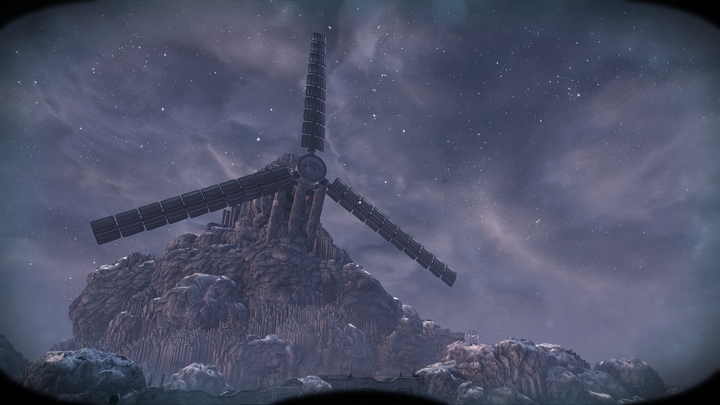
This “affordable survival” approach becomes clear through the high density of save points and ever-present infinite sources of food and water. Even the basic tools used during the exploration are “immortal” – a torch will never go out (unless you decide to dive while holding one), the hammer that enables you to tear down walls will not deteriorate, and any damage your character sustains can be cured by taking a nap. This does not mean of course that you can venture off without a sufficient supply of liquids in your backpack – as the story progresses the demand for raw materials increases, and there are less and less oases remaining in your sight. Some random factors also have to be taken into account, such as accidental stumbling upon an anomaly that increase dehydration rate or a close encounter with a thicket of infectious bushes.
To be honest, Solus introduces a solid number of dangers – and they are what provides the production with the right pace. In addition to natural hazards, such as poison ivy or inflating, aggressive echidnas, the protagonist's life is made difficult by the natives, who are apparently hell-bent on throwing pressure plates under his feet, which can conjure a rain of exploding orbs or holes with harmful spikes popping up. Another thing is that the number of their deadly devices is very limited, and it's not a problem to avoid them. To expand the array of dangers even further, our survival meters are also affected by the world itself. The mysterious planet features a day and night cycle (often characterized by extreme differences in air temperature), rapidly-changing atmospheric conditions (including rest-preventing blizzards, torrential rains, and earthquakes), and deadly natural phenomena such as meteor showers or tornadoes. All this makes the adventure not only more diverse but also excitingly unpredictable, making the experience quite dynamic.
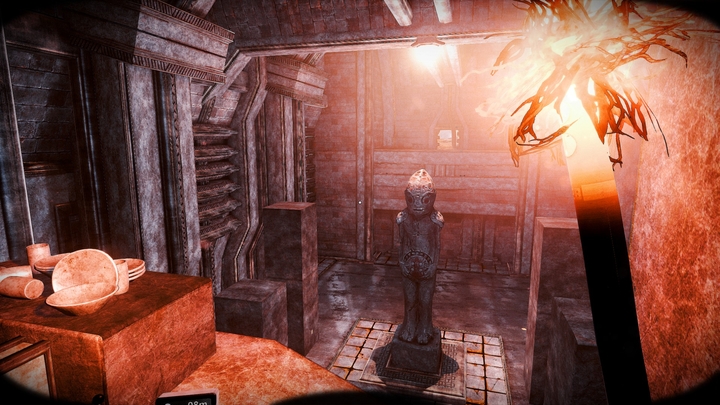
The Solus Project is filled with contents to the brim. The game world hides 118 intriguing secrets, and the story is told through a total of 513 notes and murals. There are 60 regions waiting to be visited, comprising a total of 10 extensive, well-designed locations.
The main factor behind the diversity of our adventure in the world of Solus is the abundance of collectibles laying around Gliese. Gathering more than hundred secrets requires careful digging through dozens of well-hidden sites, which gives a lot of room to maneuver to natural-born collectors and stat-maxing maniacs alike. Moreover, this impression that the planet is a kind of El Dorado for collectors, significantly increases the replayability, and gives the gameplay and old school vibe, heavily reminiscent of the Tomb Raiders of old. I was also considerably impressed with the variety of artifacts to be found on the planet – among them we will find items “borrowed” from popular movies sharing the main theme of this production (Wilson!? So this where you've been hiding all this time!), or some classic interactive items that find their place in our inventory, like the radio playing soothing symphony to make us forget of the loneliness. With so many attractions to choose from, it's not easy to deny ourselves the pleasure of at least partial commitment to rummaging through the backyards of this multi-sectioned planet – and this is exactly what The Solus Project intends to evoke.
Two-way odyssey
I'll be gladly returning to Solus, if only to admire the sheer ambition and meticulousness that had to be employed to create this diversified, truly magical, and astronomically beautiful setting. If we supplement it with vast gameplay driven by an old-school soul, a strong focus on allowing the player to create a personalized experience, and the consistent unfolding of subsequent impressive segments of Gliese-6143-C, any shortcomings we may have noticed sink into oblivion. Solus is definitely worth checking out even if it is not your usual cup of tea.
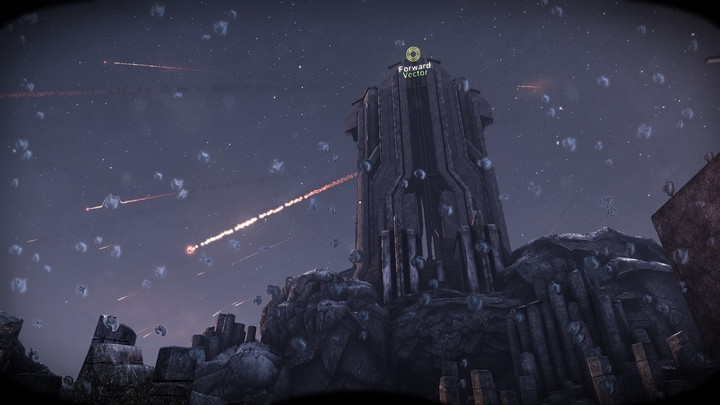
The Solus Project
The Solus Project Review – a flawed space odyssey
We review The Solus Project, an independent space adventure game aspiring to be a survival sandbox. Does the story taking place on planet Gliese-6143-C have a chance to conquer the universe?

